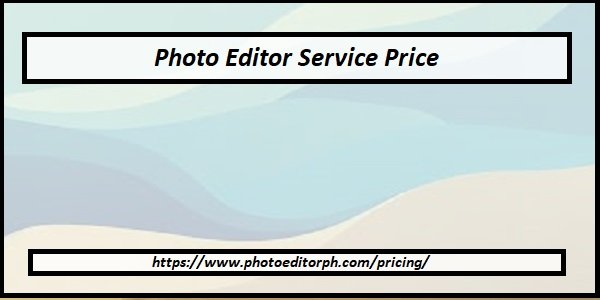|
|
Email marketing is a crucial component of any successful e-commerce business. It allows you to connect directly with your customers, build brand loyalty, and drive sales. To make the most of this powerful marketing channel, here are some effective email marketing strategies for e-commerce businesses:
Personalization: Tailor your emails to individual Photo Editor Service Price customers based on their past purchases, preferences, and browsing behavior. Use their names, recommend products related to their interests, and segment your email list to provide more relevant content.
Welcome Series: Create a series of welcome emails for new subscribers. These emails should introduce your brand, highlight your best products, and encourage recipients to explore your website further.
Abandoned Cart Recovery: Implement automated emails to remind customers about their abandoned shopping carts. Offer incentives like discounts or free shipping to entice them to complete their purchase.
Product Recommendations: Use customer data and purchase history to suggest relevant products. Employ tactics like "Customers who bought this also bought" to encourage additional purchases.
Seasonal and Holiday Campaigns: Capitalize on seasonal events and holidays with special promotions, discounts, and themed emails. These campaigns can drive urgency and boost sales during peak periods.
Customer Reviews and Testimonials: Showcase positive customer feedback and reviews in your emails to build trust and credibility. Include links to product review pages and encourage customers to share their experiences.

Exclusive Offers and Loyalty Programs: Reward your most loyal customers with exclusive offers, early access to sales, or membership to a loyalty program. This fosters customer retention and encourages repeat purchases.
Social Proof: Incorporate social media elements into your emails to highlight user-generated content and demonstrate your products' popularity among customers.
Mobile Optimization: Ensure your emails are mobile-friendly, as a significant portion of users now access their emails on smartphones and tablets. Responsive design is crucial for delivering a seamless user experience.
A/B Testing: Continuously experiment with different email elements such as subject lines, visuals, call-to-action buttons, and content to determine which variations generate better results. This helps refine your email marketing strategy over time.
GDPR Compliance: Respect data privacy regulations and ensure you have consent from subscribers before sending them marketing emails. Implement an easy-to-use unsubscribe option to comply with unsubscribe requests promptly.
Post-Purchase Follow-ups: After a customer makes a purchase, send a thank-you email and follow-up emails to request feedback, reviews, or cross-sell complementary products.
Limited-Time Offers: Create a sense of urgency with limited-time offers and flash sales. Notify your subscribers of these time-sensitive promotions to drive immediate action.
Cart Abandonment Follow-up: If a customer has recently made a purchase, send them an email with related products or accessories that complement their purchase.
User-Generated Content Campaigns: Encourage your customers to share their experiences with your products and showcase the best content in your emails. This creates a sense of community and authenticity around your brand.
By incorporating these email marketing strategies into your e-commerce business, you can foster stronger customer relationships, increase engagement, and drive sales, ultimately contributing to the long-term success of your online store. Remember to regularly analyze email performance metrics and adjust your approach based on customer feedback and evolving trends to maximize the impact of your email campaigns.
|
|